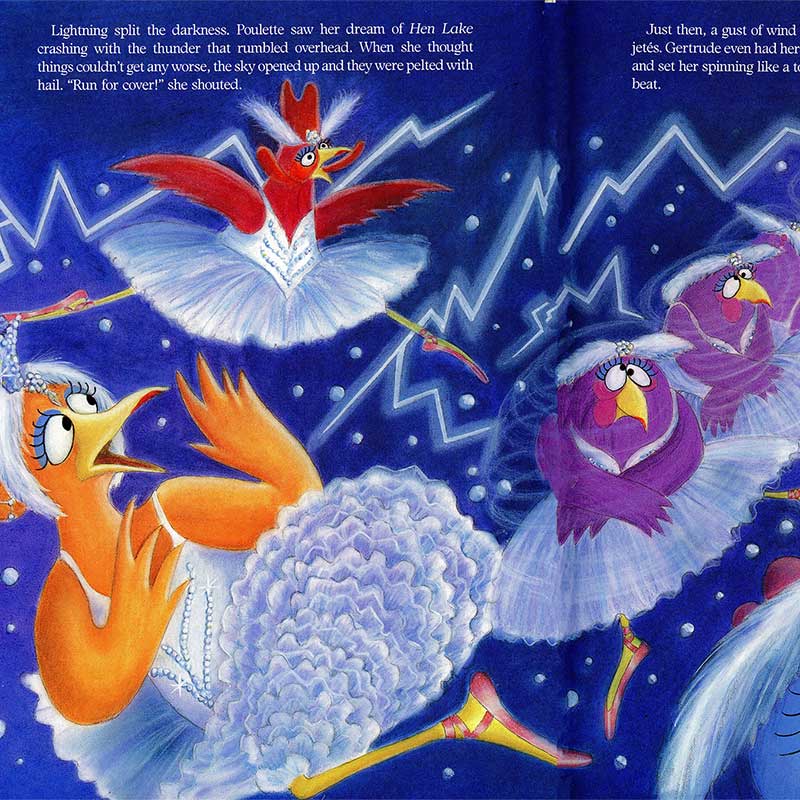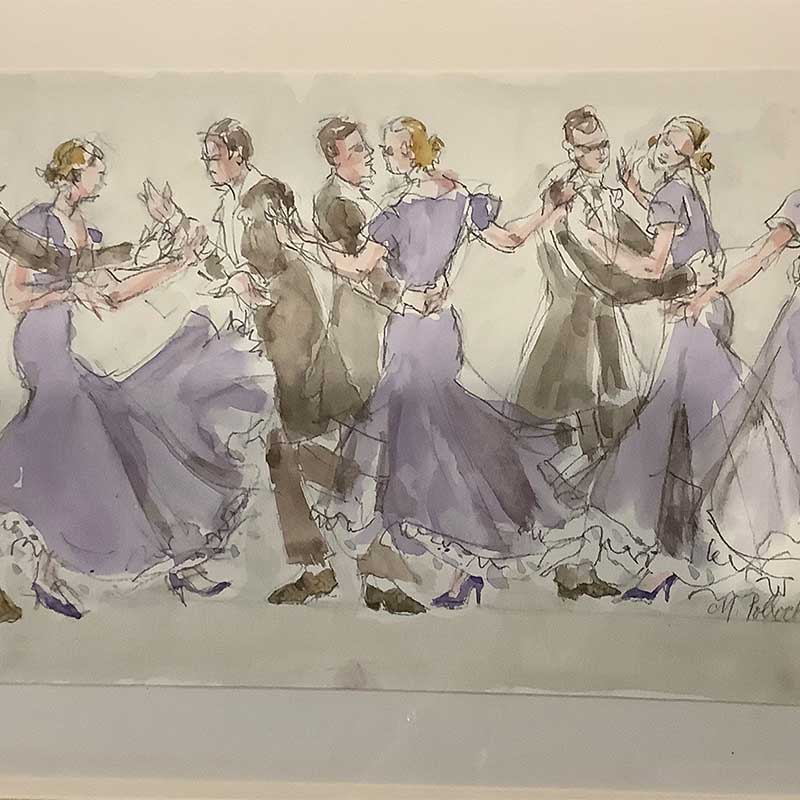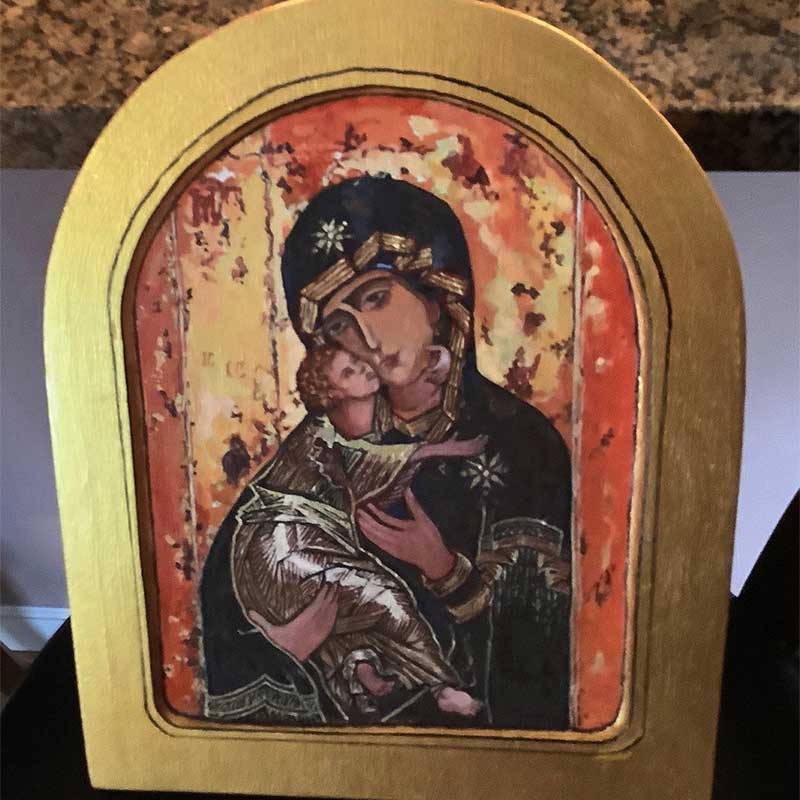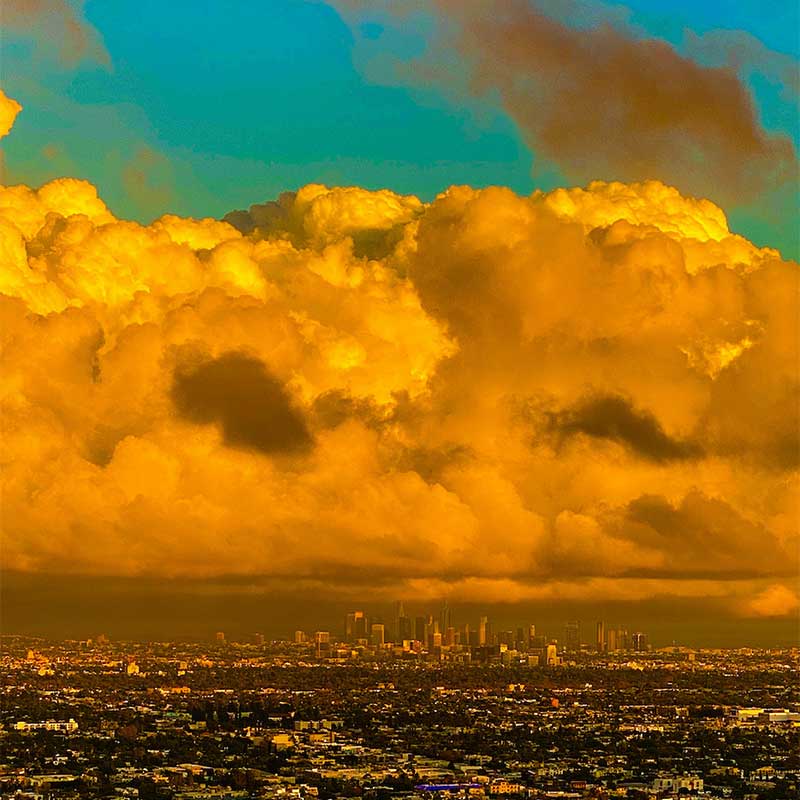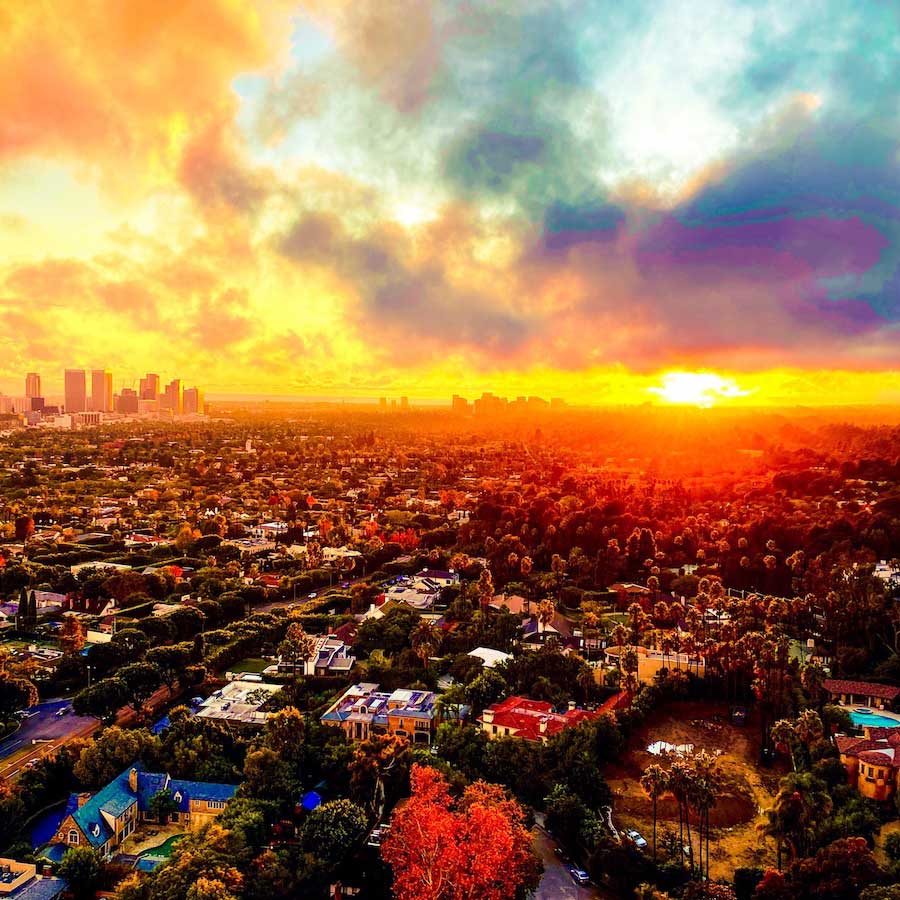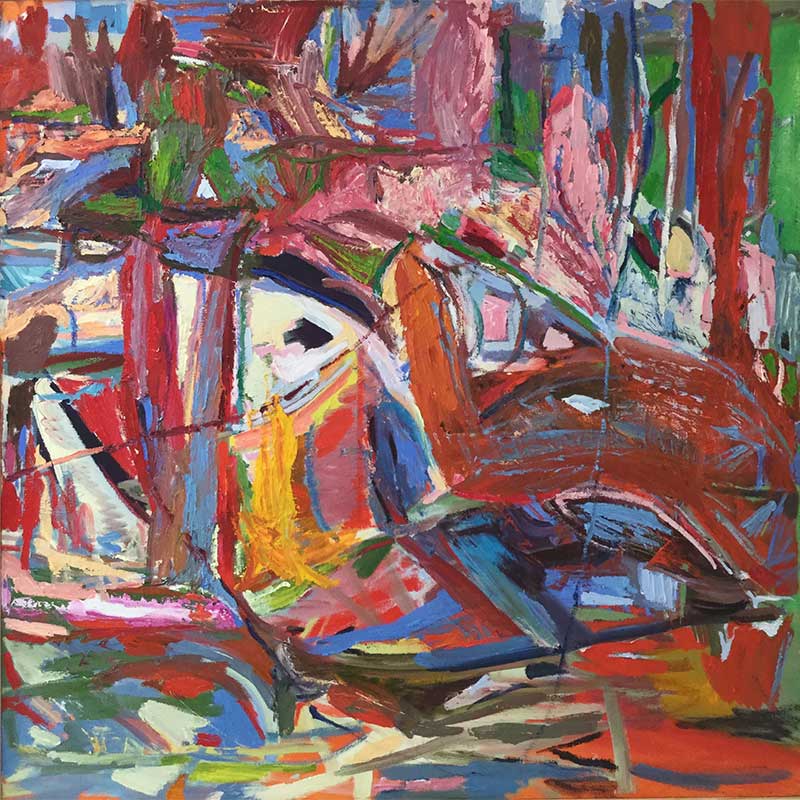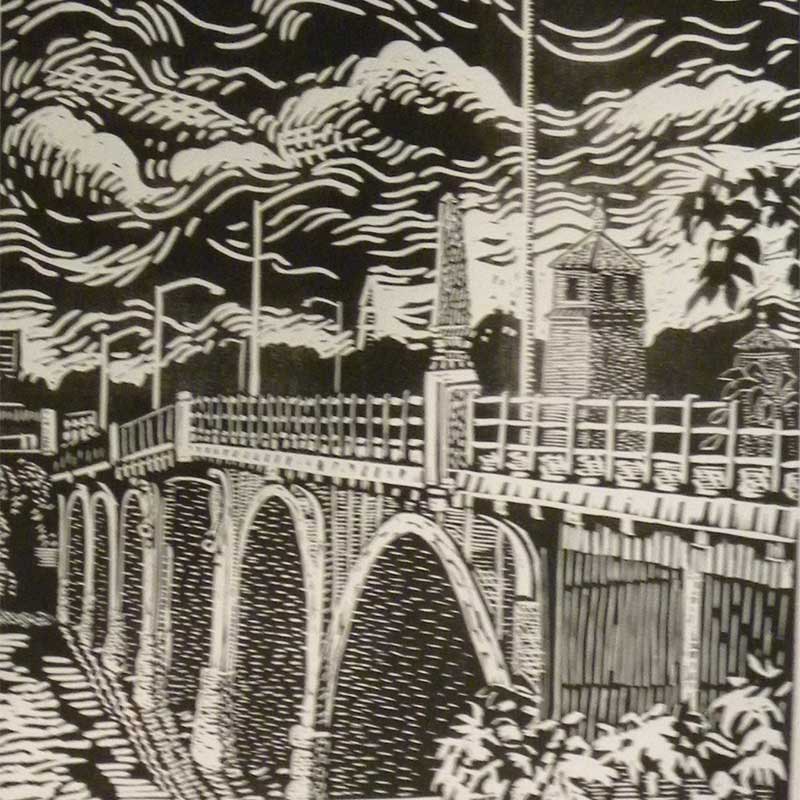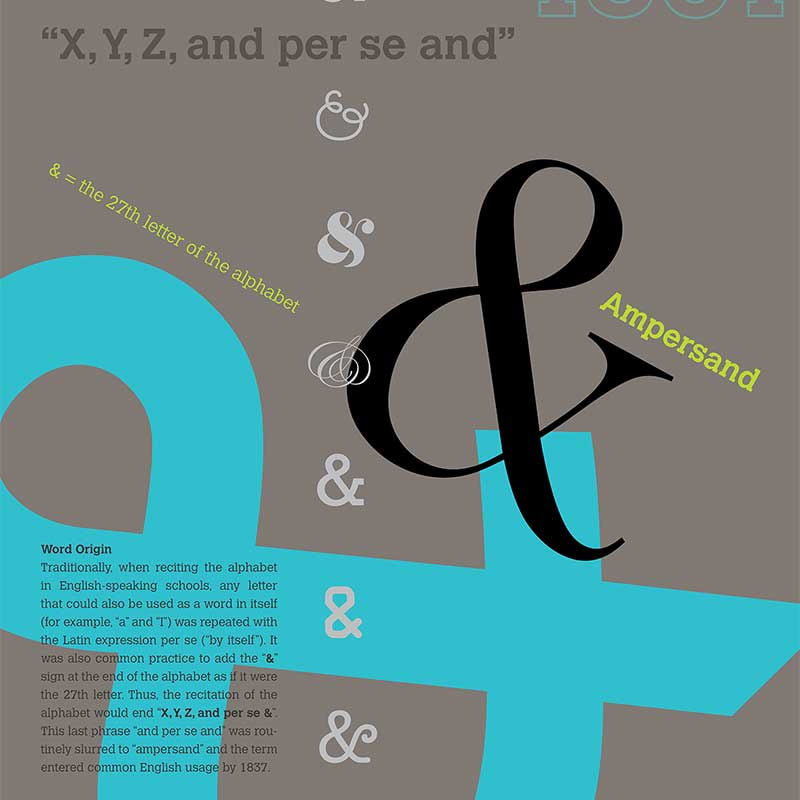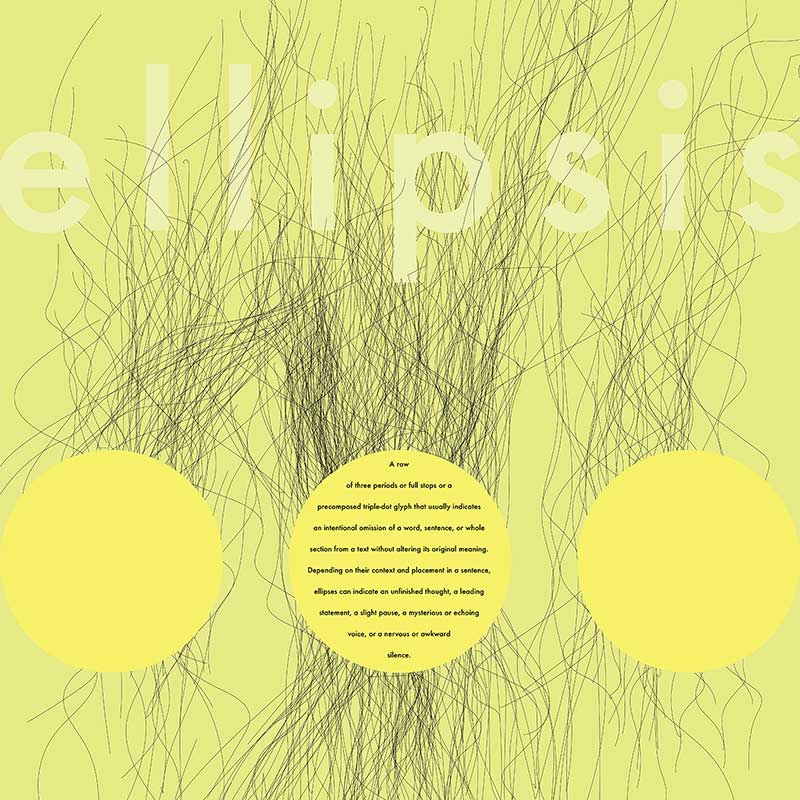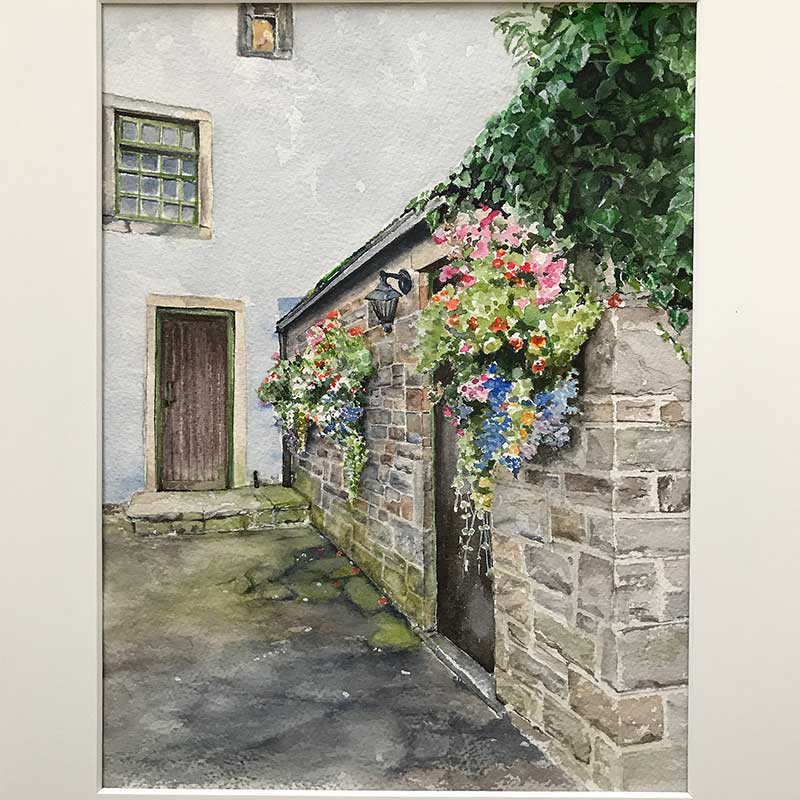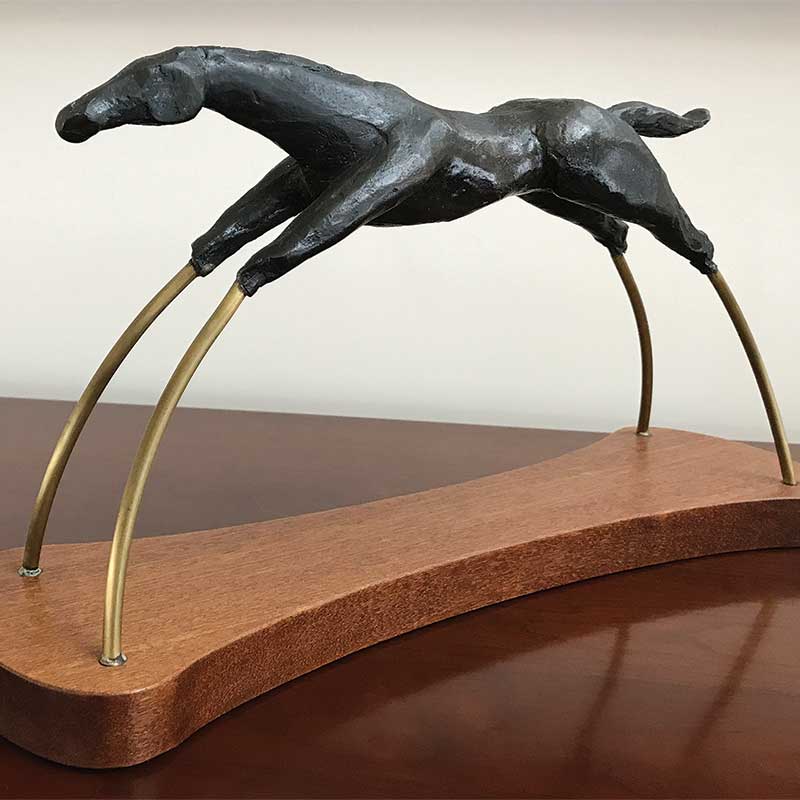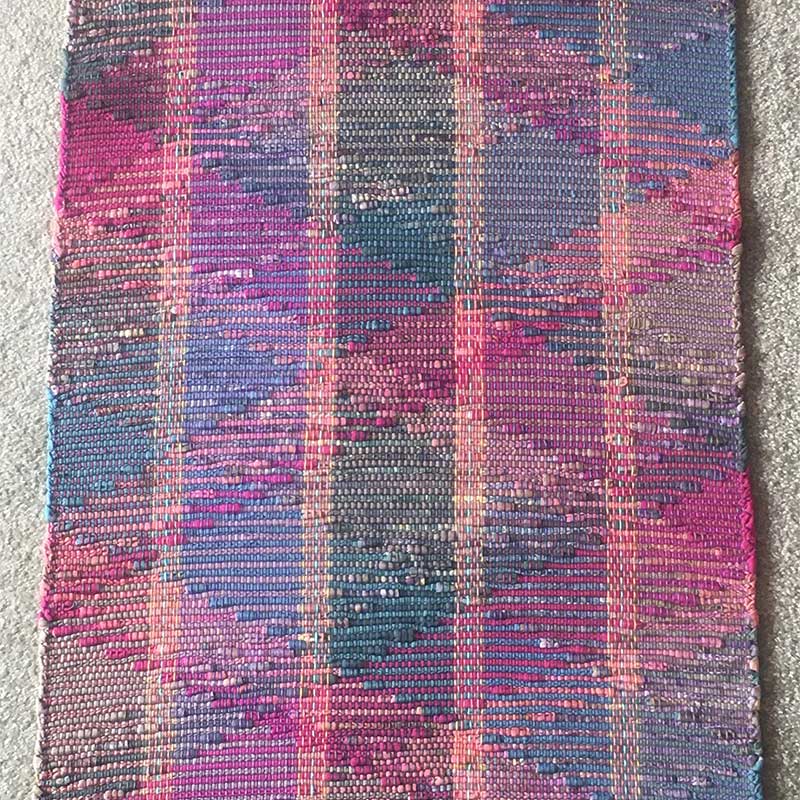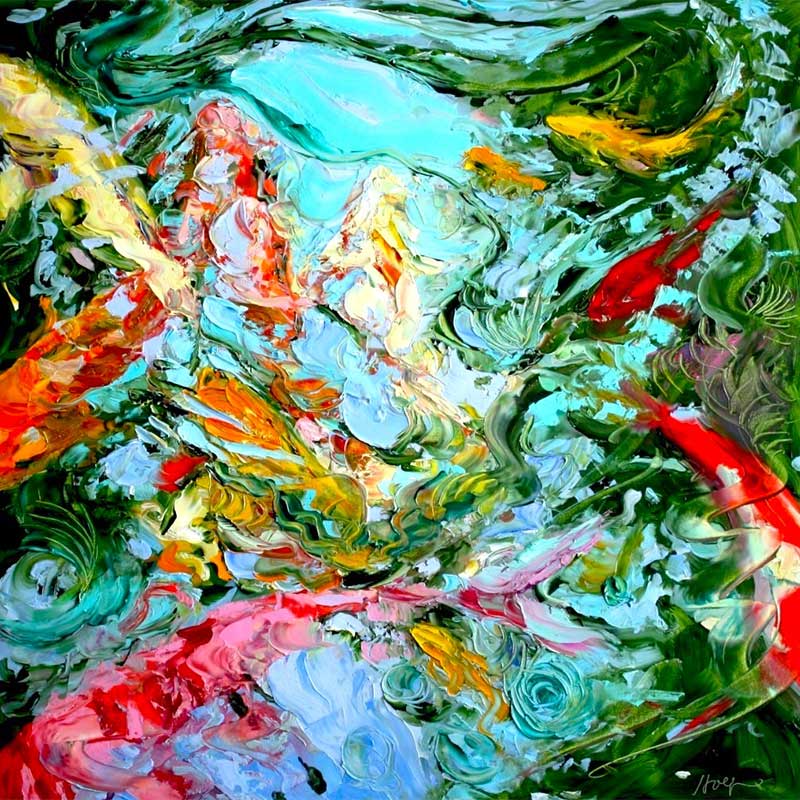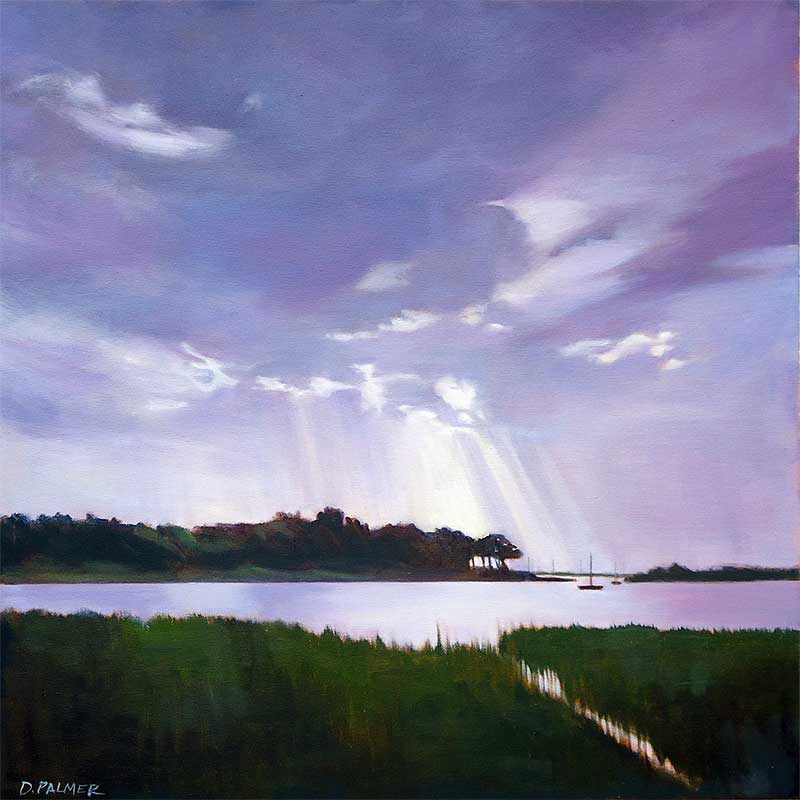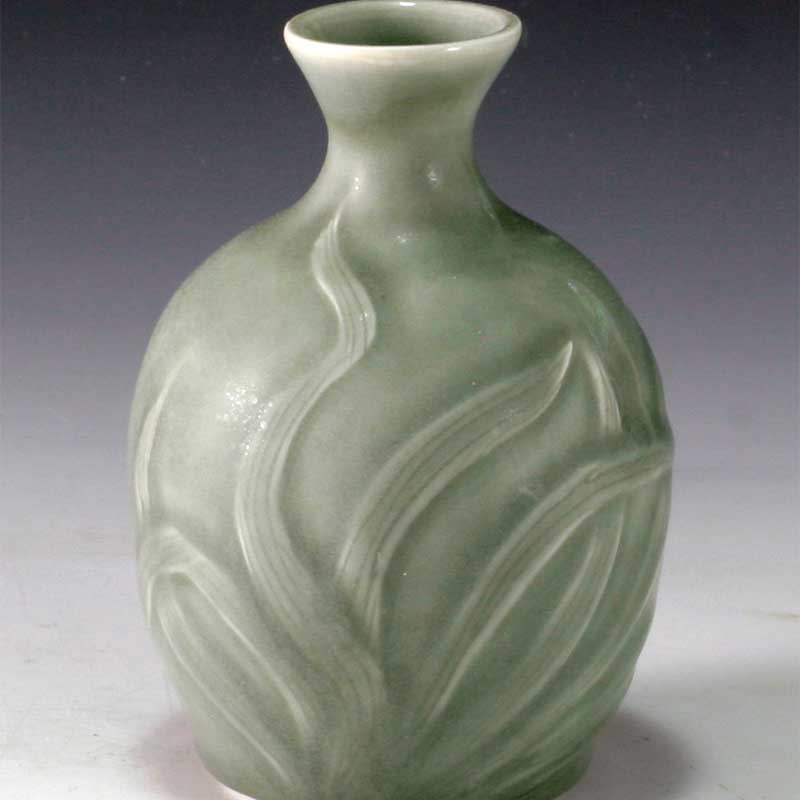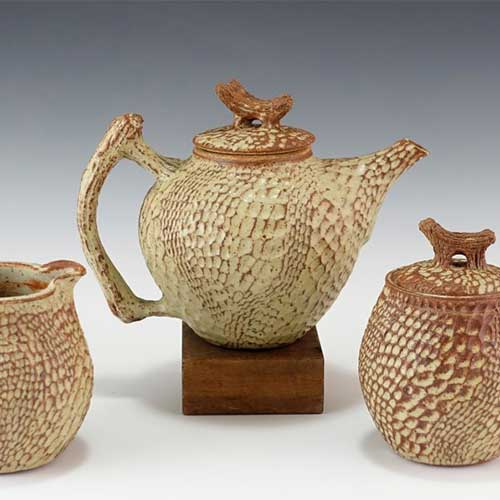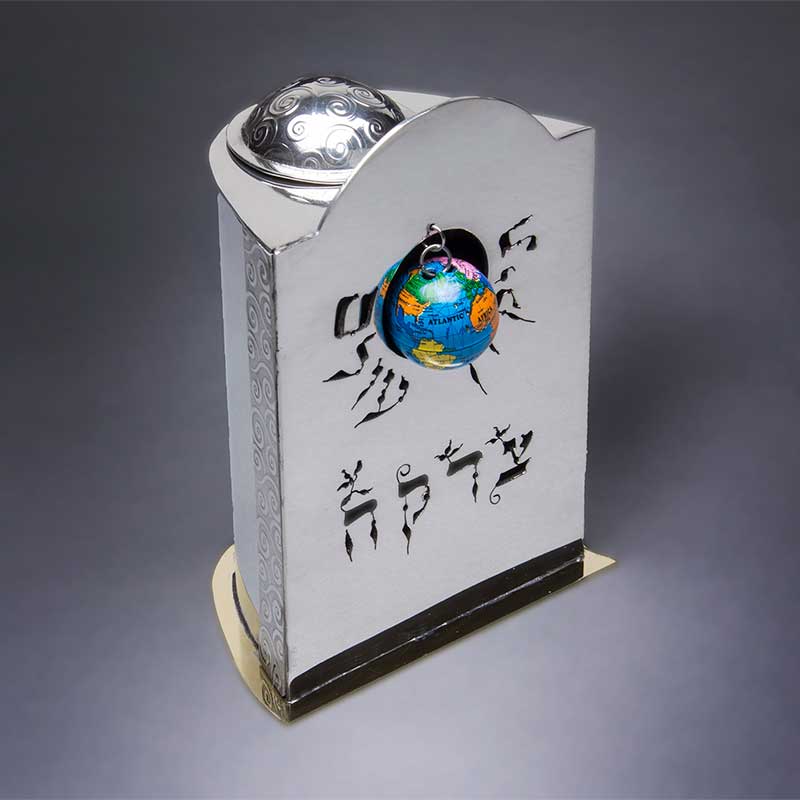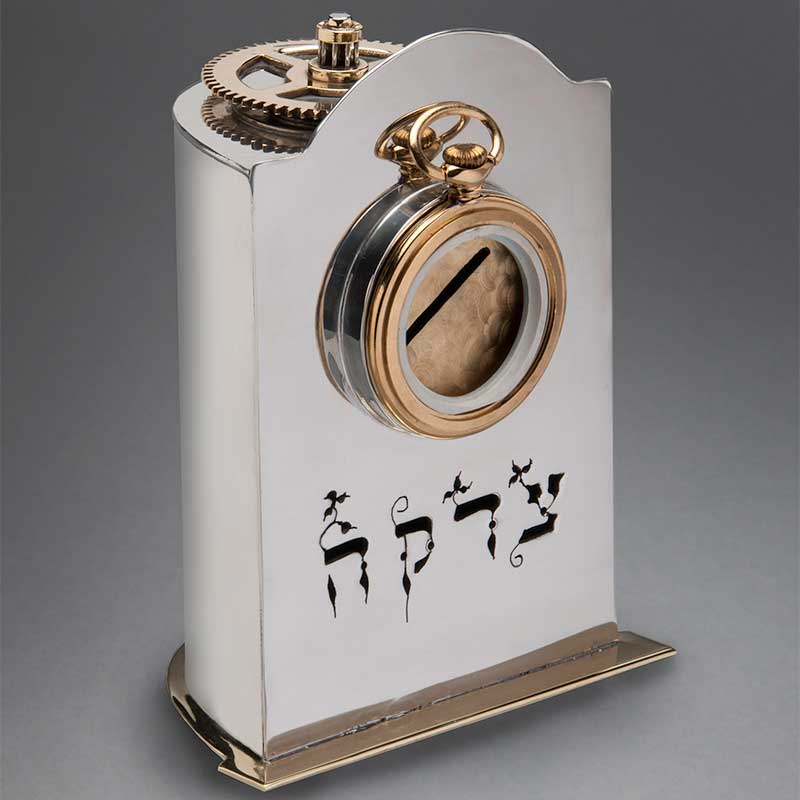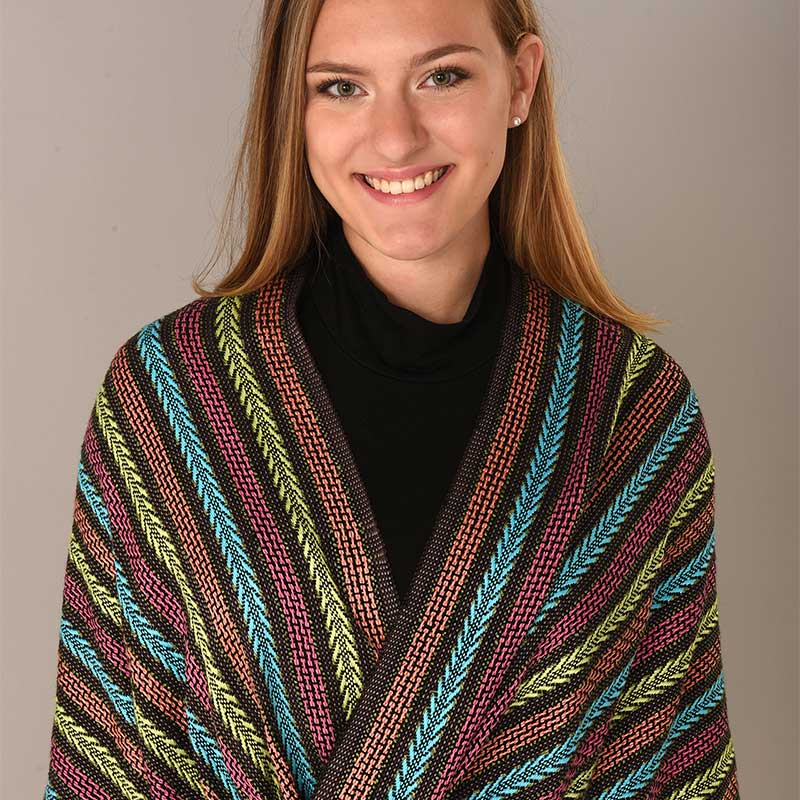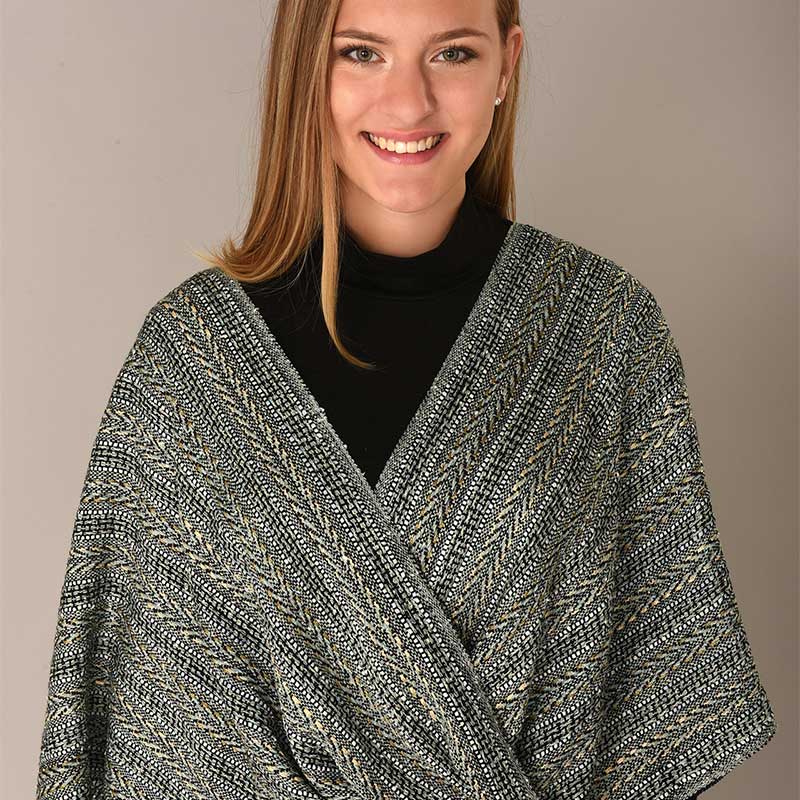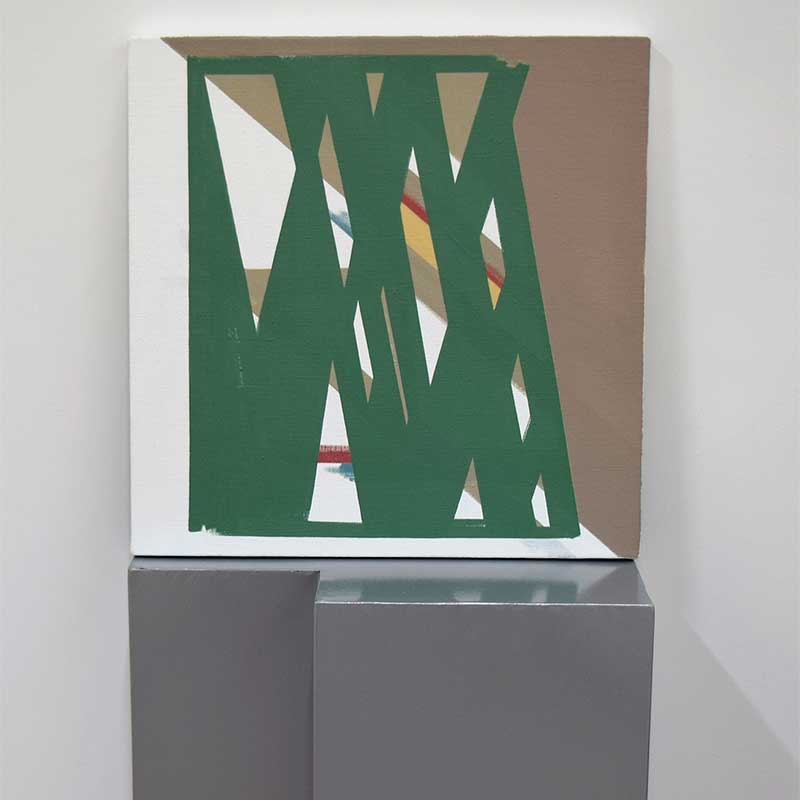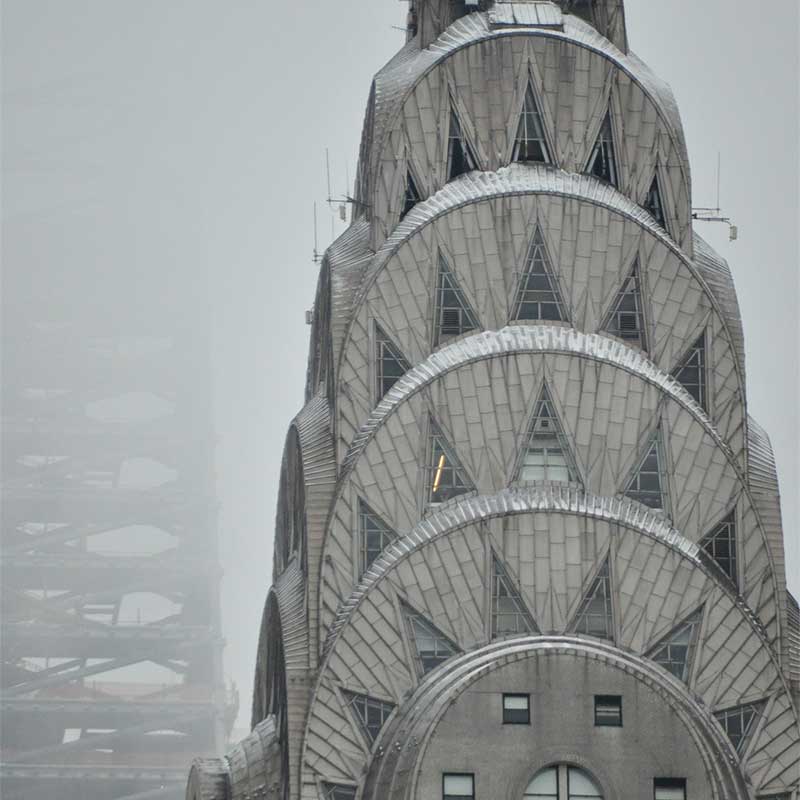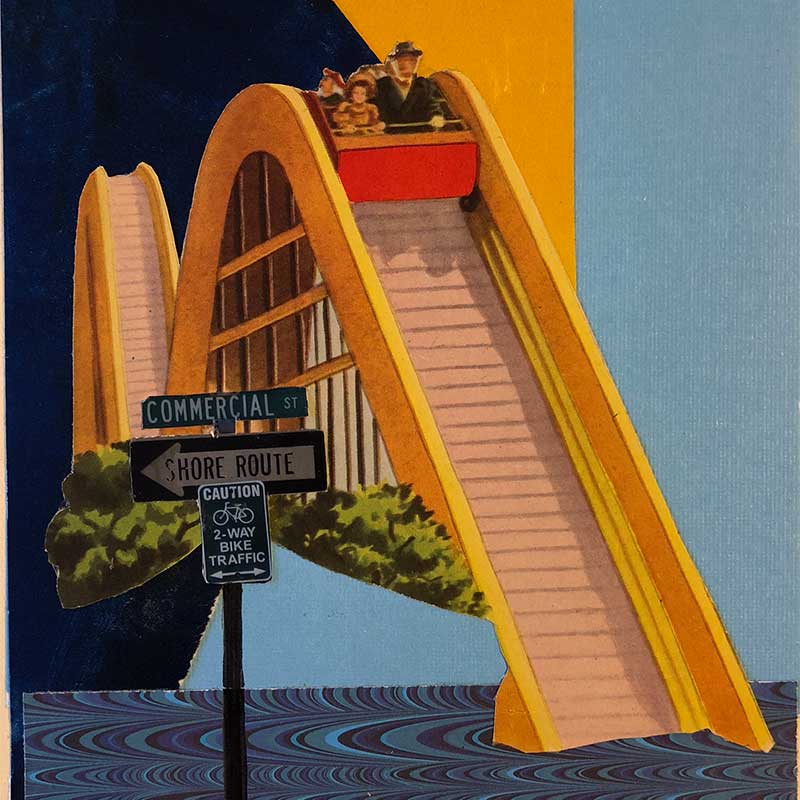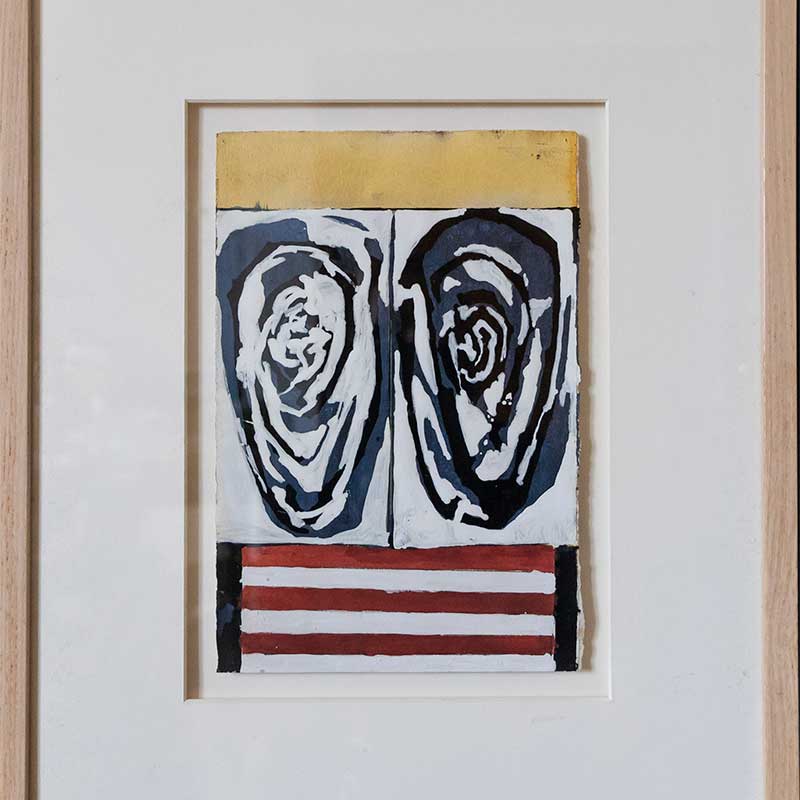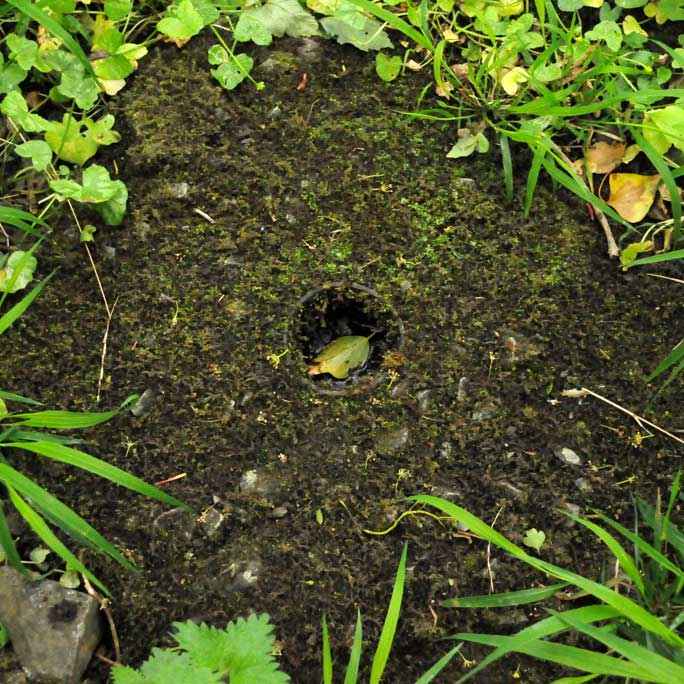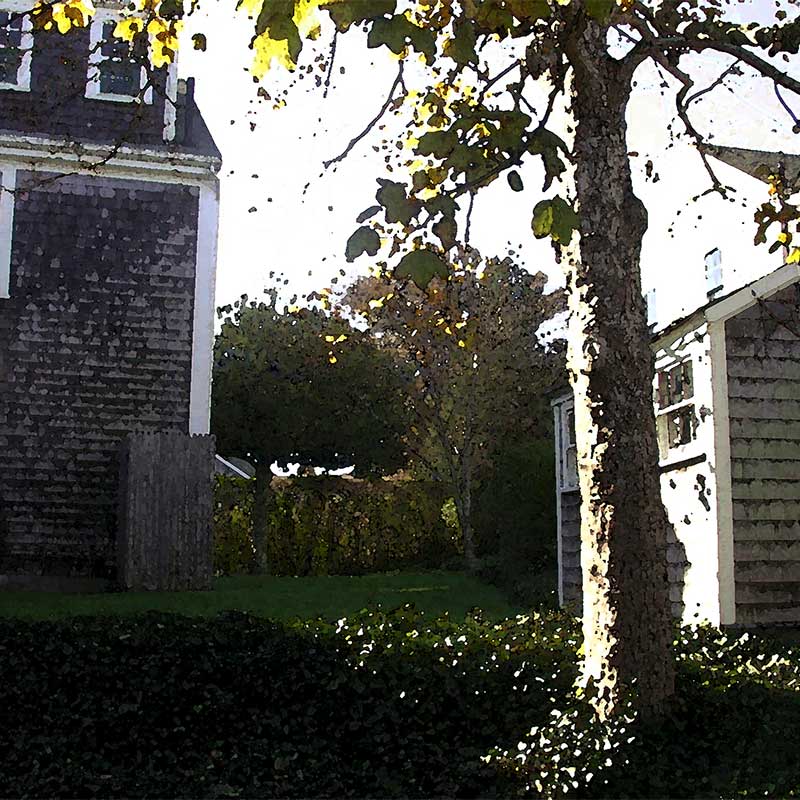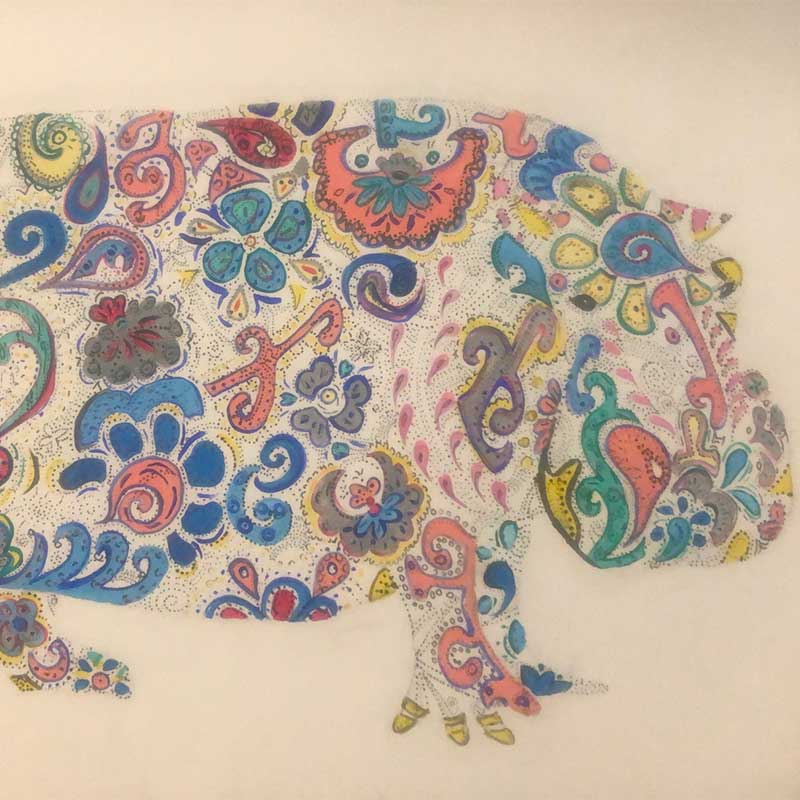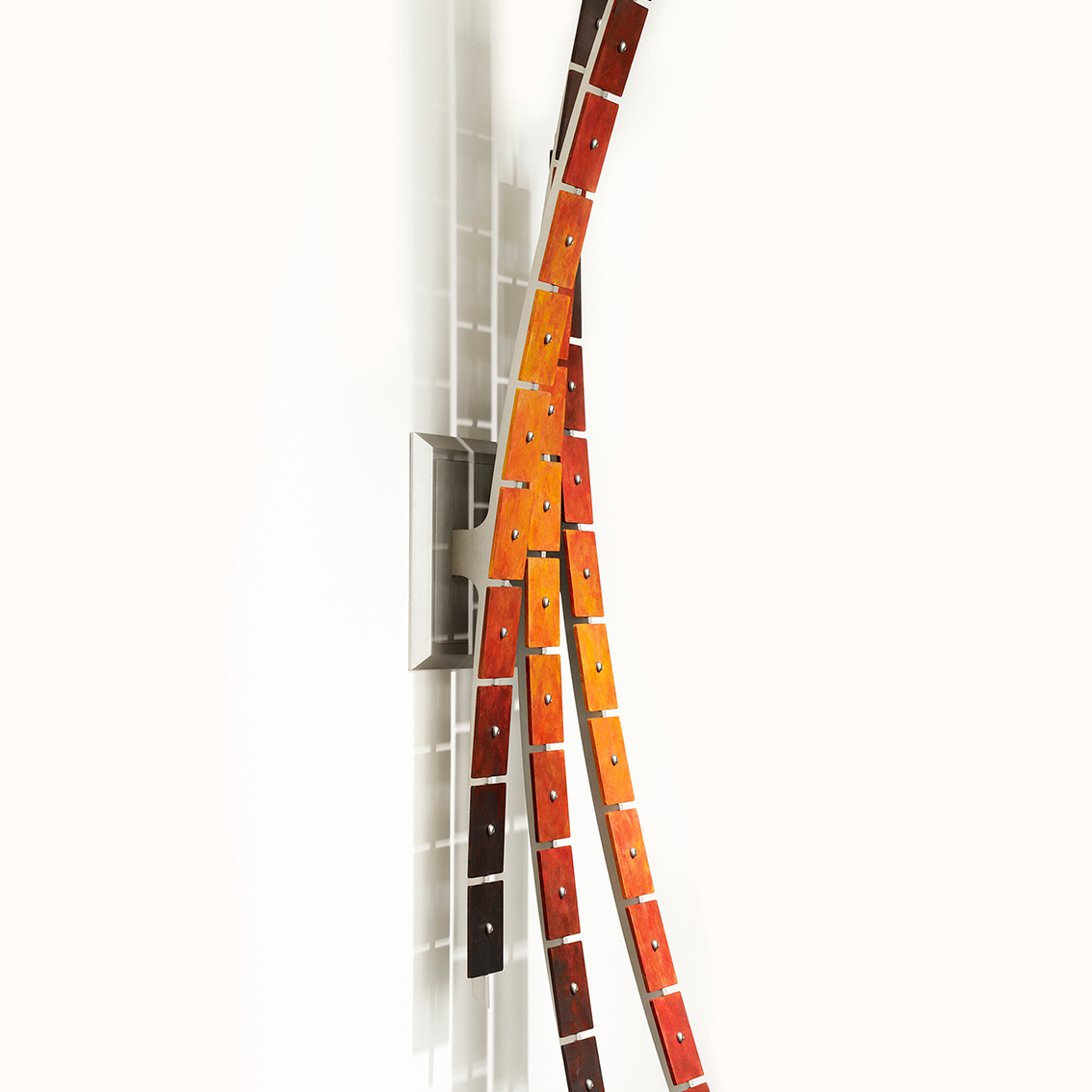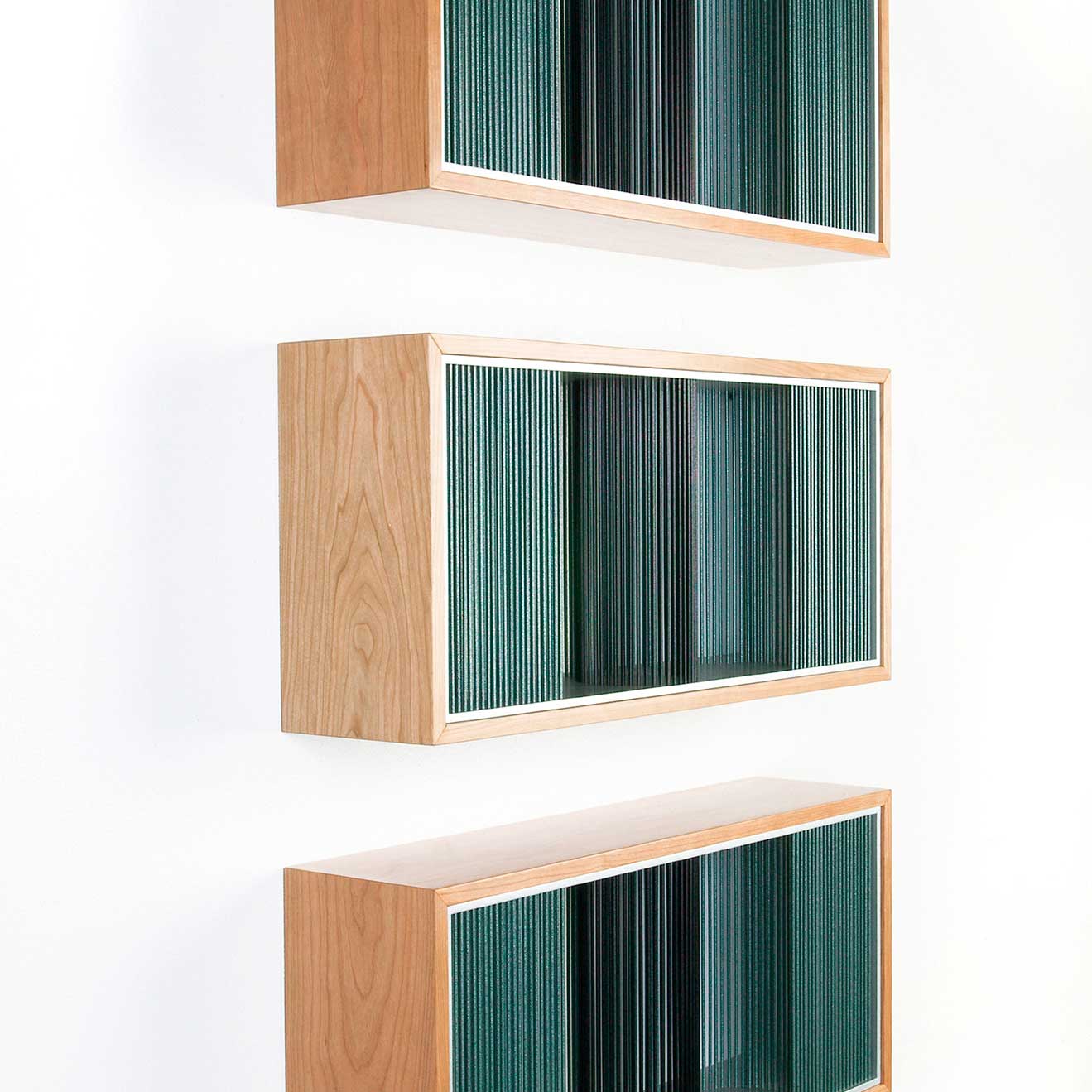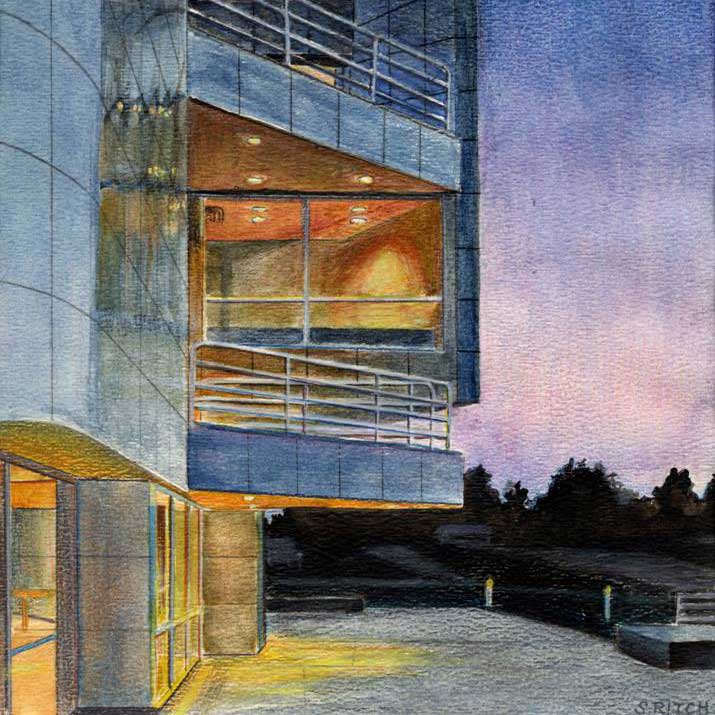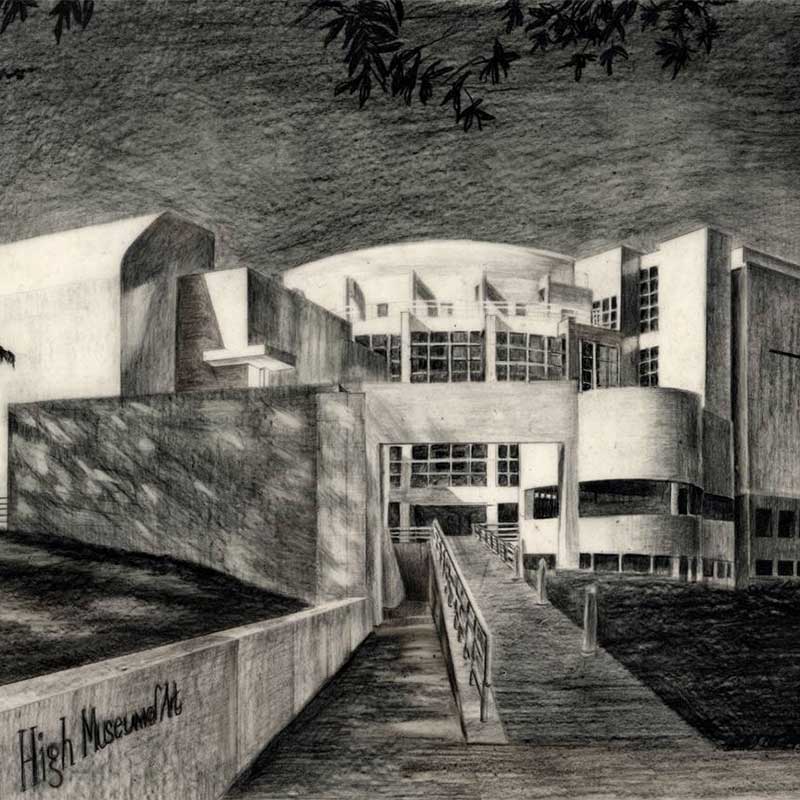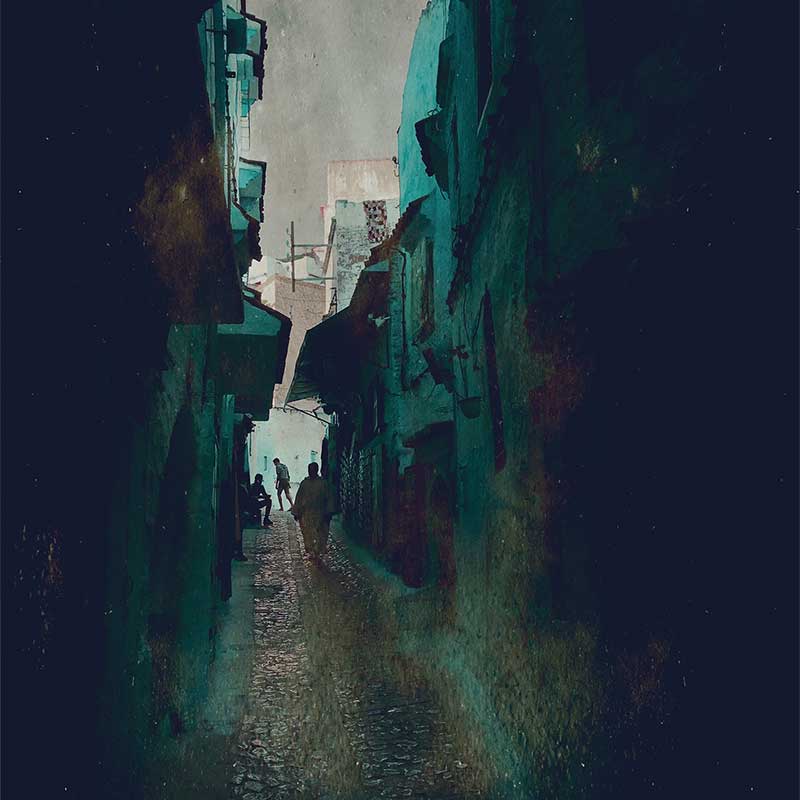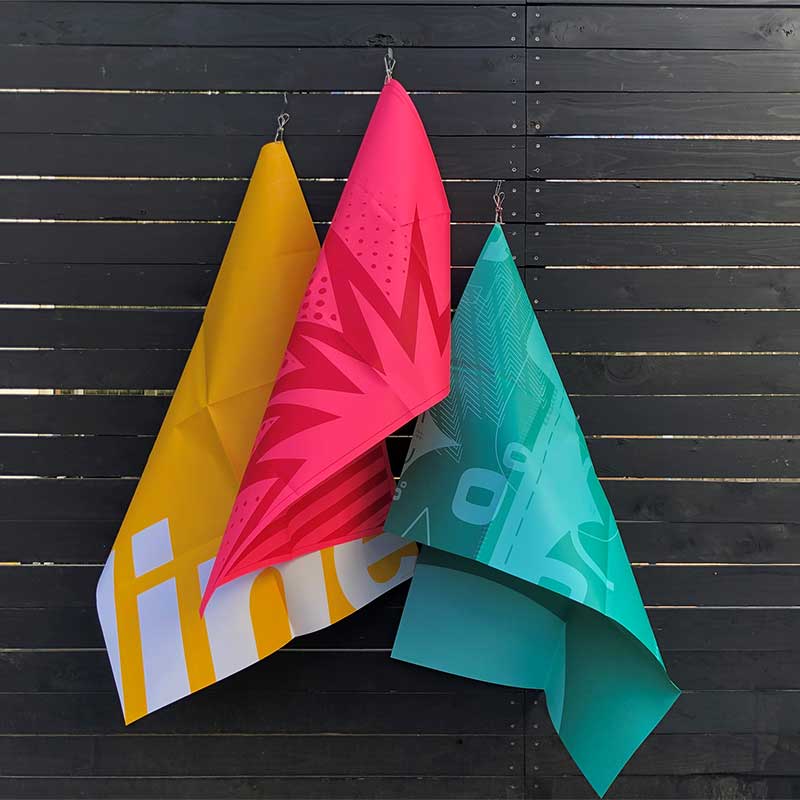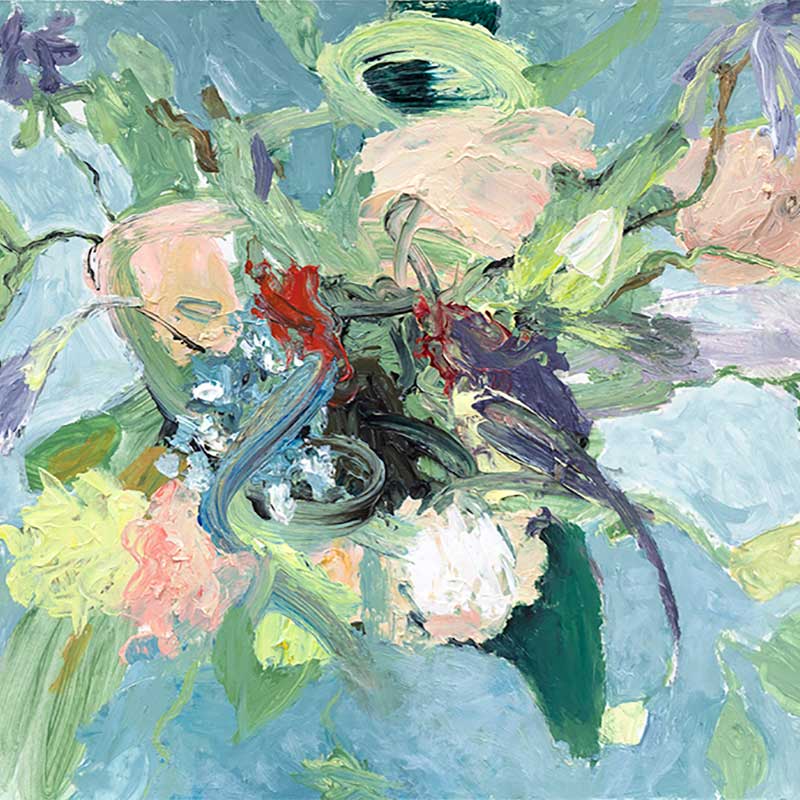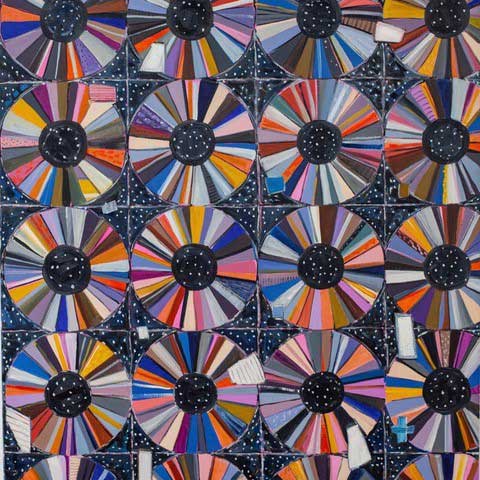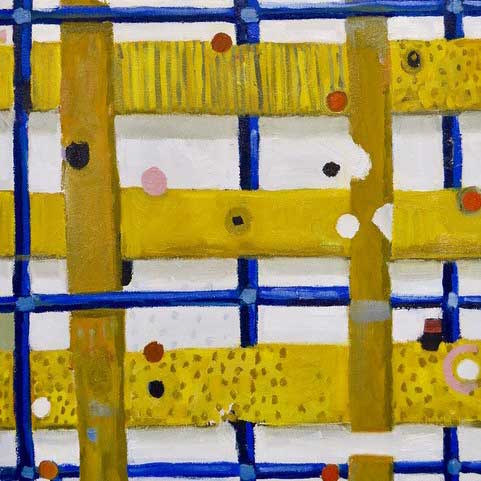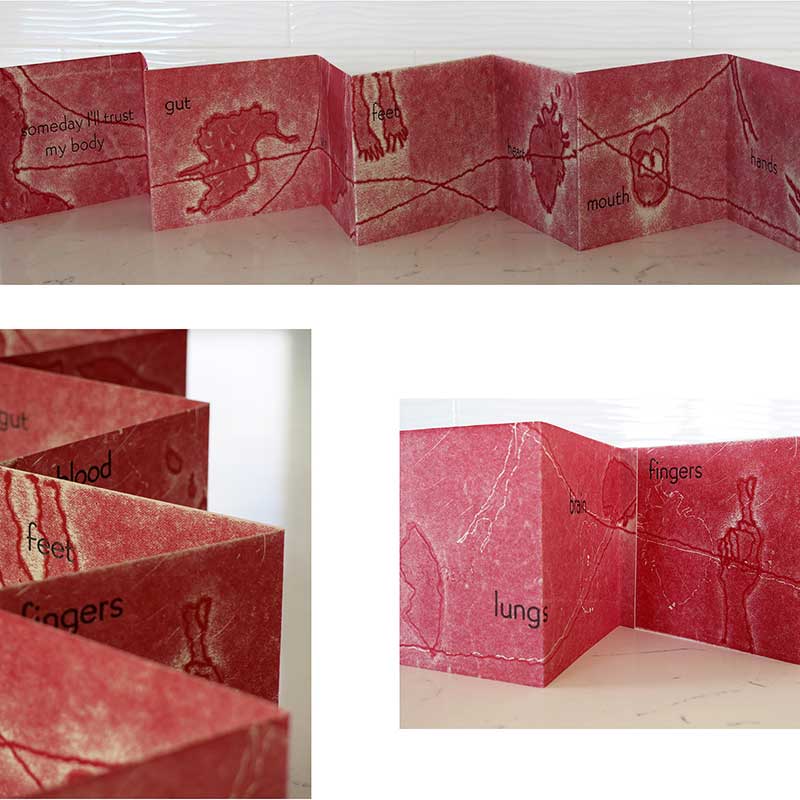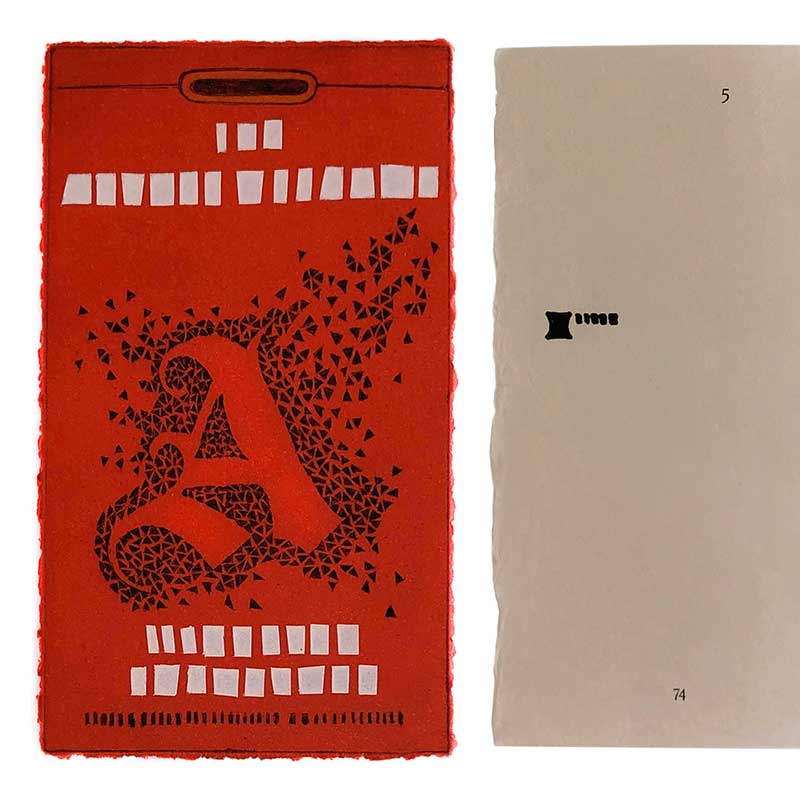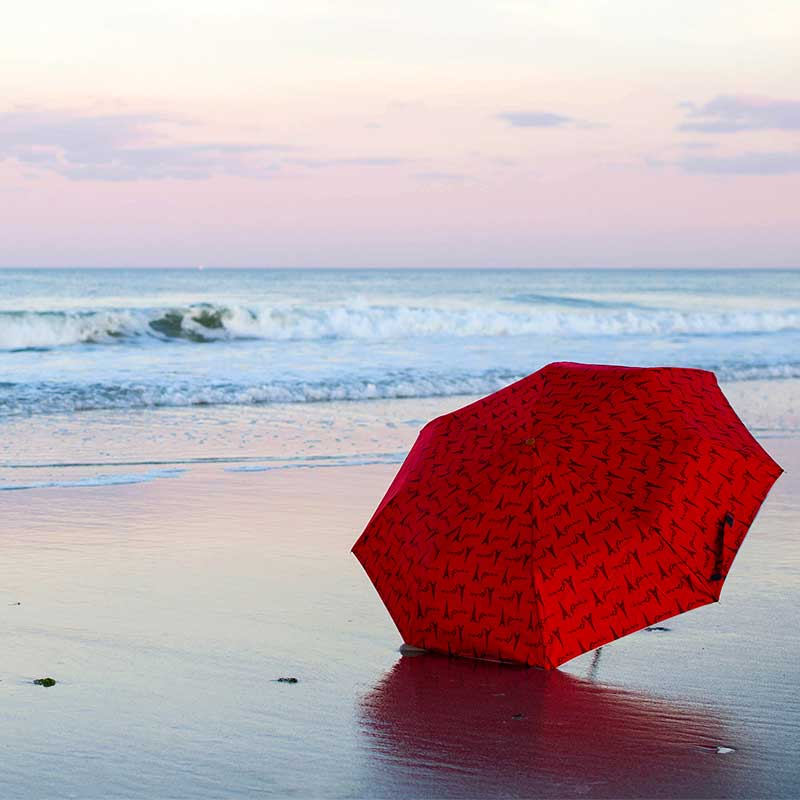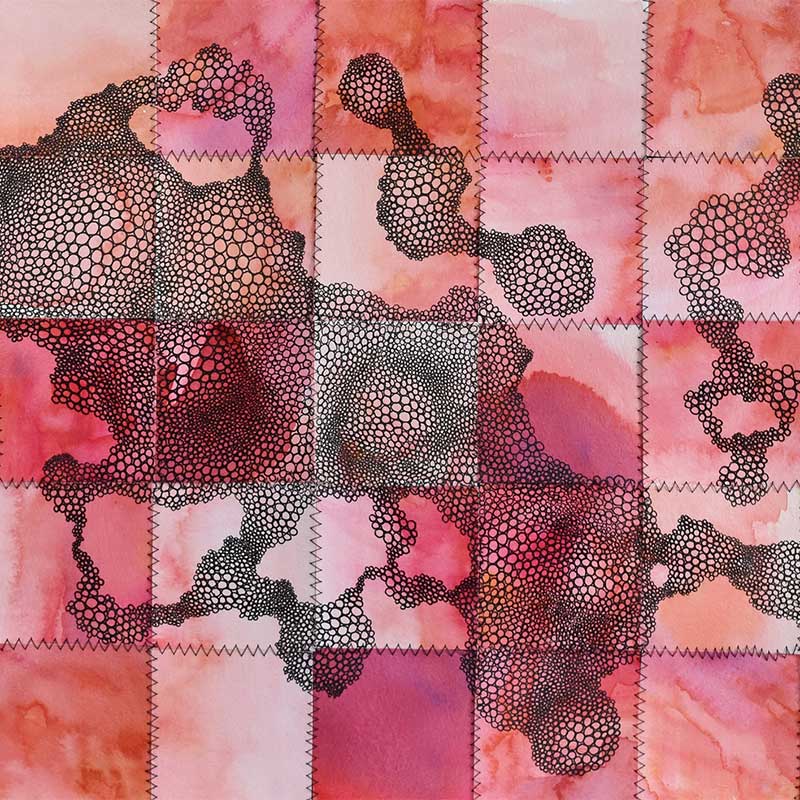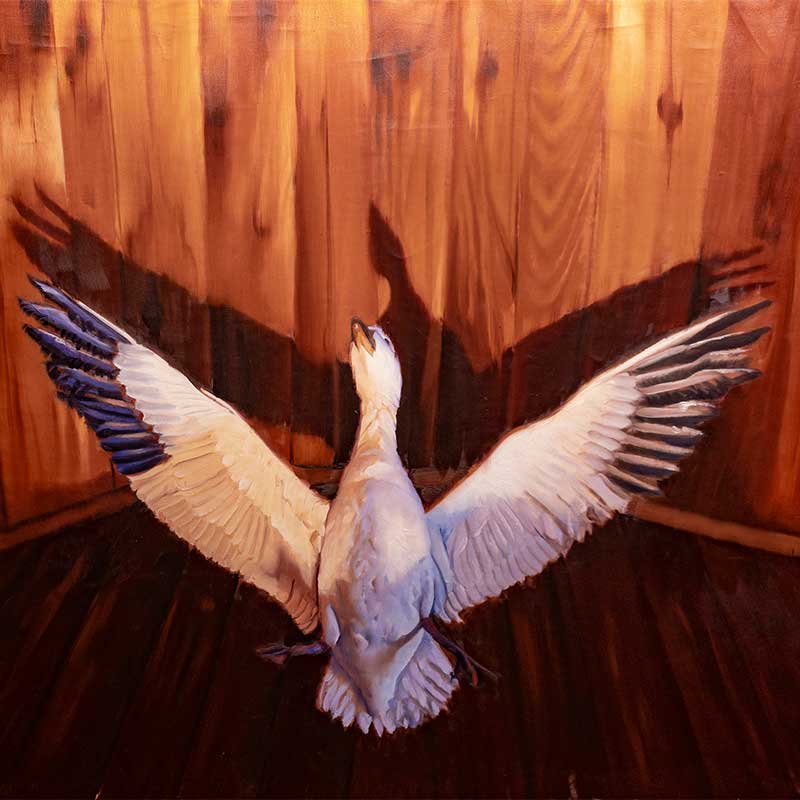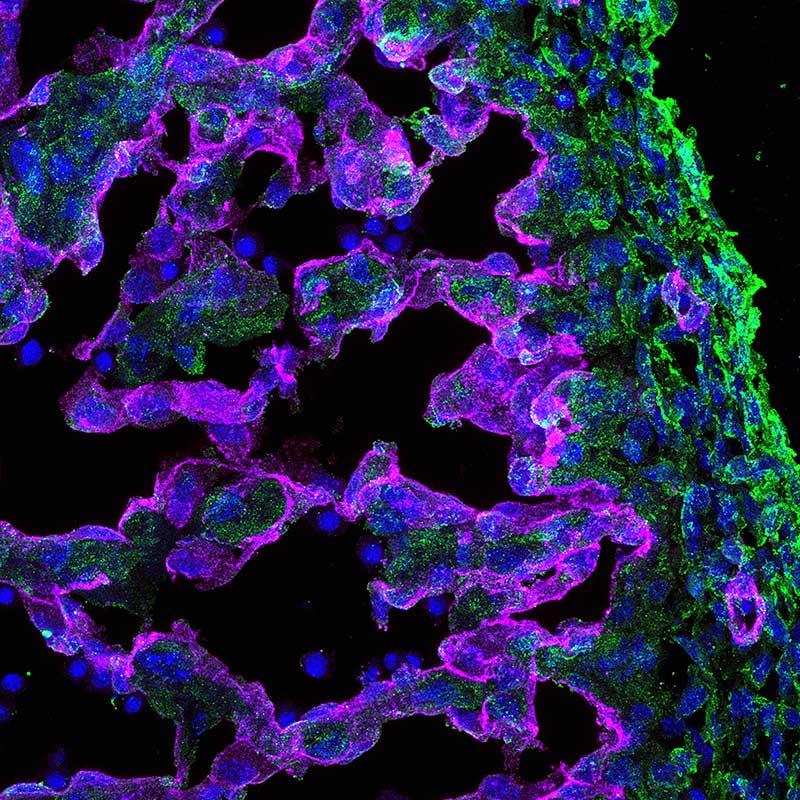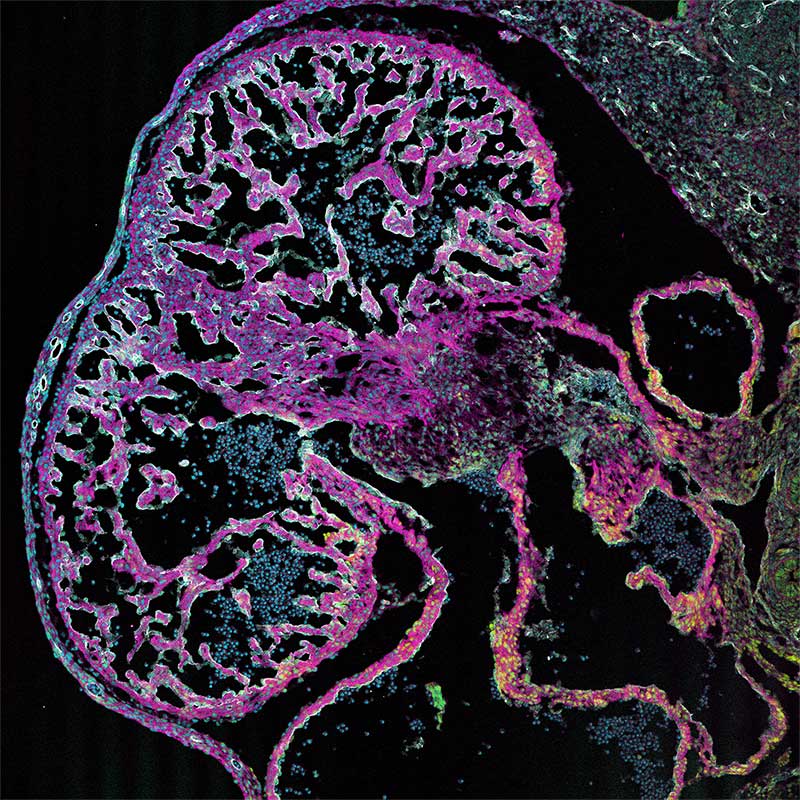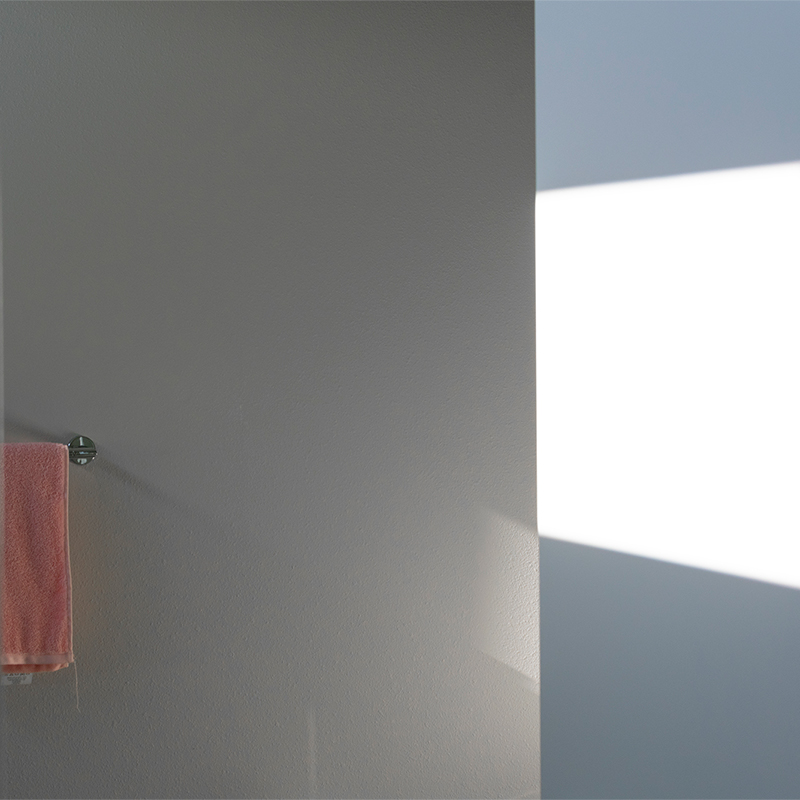Twenty Sixth Annual Alumni Reunion Art Exhibiton
Curators: Honour Mack '85, Will Pollock '90, Sarah Meyers Brent '00
Welcome to the virtual gallery for this year's Twenty Sixth Annual Alumni Reunion Art Exhibition. Special thanks to our curators Honour Mack '85, Will Pollock '90, and Sarah Meyers Brent '00 who curated this exhibition electronically and via video conference. We appreciate the participation of all of our artists, and their willingness to be included in this virtual presentation honoring our talented alumni in classes ending in 0's and 5's.
- Mary Jane Springer Auch '60
- Mary Weedon Pollock '60
- Lynne Frost Deutch '65
- Tina Garber Olsen '65
- Pam Page Traver '65
- Ann Forshay Breaznell '70
- Tina Lee Carruthers '70
- Carol Hammer '70
- Linda Holt '70
- Deborah Fritts Palmer '70
- Annie Rogers Schliffer '70
- Frann Addison '75
- Cecilia Frittelli '80
- Beth Shipley '80
- Dana Laird '85
- KD Mernin '85
- Andrew Flamm '90
- Will Pollock '90
- Tracy Racicot '90
- Jacob Kulin '95
- Sarah Ritch '95
- Mary Serphos '95
- Phoebe Smith '95
- Sarah Meyers Brent '00
- Crystalle Lacouture '00
- Sarah O'Farrell '00
- Anna Hoberman '05
- Carly Michelson '05
- Faith Towers Provencher '05
- Garrett Cook '10
- Lindsey Avery Fitzsimons '10
- Elizabeth Hopkins '15
Mary Jane Springer Auch '60
I have been a children's author and illustrator for the past 33 years, publishing over 40 books ranging from picture books to young adult novels. A number of these books have won state awards across the country. Many of the picture books have featured chickens involved in the arts - their stories told with an abundance of puns!
Mary Weedon Pollock '60
I'm pleased to submit again in support of our great alumni and the Tang!
Lynne Frost Deutch '65
The works of Lynne Deutch are studies in spontaneity and spirit. Lynne would consider herself an artist and travel photographer. Her photography focuses on capturing life as it might appear every day; rugged, demanding, and joyful. Her travels have taken her to Kenya, Burma, the Galapagos Islands, and even Antarctica, each trip cementing her love of exploration and fascination with humanity. The adventurous travel that Lynne enjoys leads to images that are often unusual but always fascinating. Her subjects range from personal studies of villagers, vast penguin colonies, and chaotic city life to the abstract compositions of remote sea ice. When photographing people, she captures her subjects in their most natural state; sometimes working, other times playing. When her subjects are not human, Lynne accentuates the most interesting aspects, focusing on texture and composition. Lynne creates images that are unique by portraying her subjects in ways that people might not imagine.
Tina Garber Olsen '65
I like to look at my work and find in it beauty and meaning that I don't always understand until much later. I am always amazed at how revealing it is about my life without intentional inquiry on my part. My art is my voice and through it I can share with others more deeply and honestly. I think that is why I do it.
Pam Page Traver '65
I majored in art at Skidmore, with a concentration in jewelry and enamelling. My interest in working with metal resurfaced when I studied printmaking at the Art Institute of Boston. I have a Charles Brand etching press and create my etchings, monotypes, collagraphs and linocuts with it. Nature is a continuous source of inspiration for me and I often do a pleine air painting of a subject before doing a print of it.
Ann Forshay Breaznell '70
Within the world of typography, my work explores the field of punctuation. I am interested in the historical development of punctuation marks, their grammatical use, and visual form and character.
Tina Lee Carruthers '70
I went into graphic design after graduation, founding my own firm in 1972. I have been very fortunate to have enjoyed an immensely satisfying career in the arts. I experienced first-hand the exciting transition from cut-and-paste mechanical layouts to digital computer graphics, embracing the Macintosh computer with open arms in the mid '80s. After scaling back my design business in 2003, I began looking for a different, more hands-on outlet for my creativity. In 2005 I returned to Skidmore for a fall semester course in bronze casting with John Cunningham (I had taken 3D Design from him in the late '60s). I thoroughly enjoyed the class, learning about the process, getting my hands good and dirty, and interacting with the students. I must admit to being a more engaged student the second time around! More recently I have explored watercolor and weaving.
Carol Hammer '70
Upon graduation, I went to work as a graphic designer for a screen printer and still run the business today as my own, but soon started to weave learning from a Skidmore professor's wife. I have been weaving ever since, studying around the country with various teachers, learning many techniques. Color and screen printing were a large part of my art world at Skidmore and color continues to influence my weaving as well as other side interests in quilting, basketry as well as rug hooking and fiber arts. Both the woven piece and the hooked rug are original designs following instruction in each technique. Today I continue to work in graphic design, but also pursue weaving for sale and more recently fine silver jewelry which actually began at Skidmore. I have been creating jewelry pieces now for the past 15 years studying continually and attending conferences, showing at a few area locations.
Linda Holt '70
The Koi Series of paintings focus on vividly colored fish - Japanese carp - swimming in a realm of liquid reflections. The red, orange and golden koi often merge with their environment, swallowed by rivulets of water, becoming pure abstractions of light and motion. In a sense, these koi paintings are portraits in water.
Deborah Fritts Palmer '70
Upon retirement from a 30-year career in commercial art in 2000, I returned to fine art to pursue landscape painting in pastels. Several classes and workshops later, I became a plein air painter in oils. Today I paint with The Wednesday Group, plein air artists of the East End of Long Island during the summers and with the Mt. Pleasant Artist Guild in the winter.
Annie Rogers Schiffler '70
I am in constant awe of the patterns and rhythms of nature. I wish my work to reflect this, as well as nature's mystery, to let the clay dance in my hands and body so that the clay and I become one. And when the user of these pots eats, drinks or arranges flowers, I hope that he or she can experience this mystery and the sacredness of life in small daily rituals.
Frann Addison '75
www.instagram.com/FrannAddisonJudaica
I enjoy seeing the potential in found objects and antique elements. Combining my metalsmithing skills with my artistic vision, I often transform these components into unique pieces of Jewish ritual objects. My work acknowledges the past, yet offers new and unusual forms which satisfy the demands of religious requirements. Through hand forming, piercing, soldering, and/or riveting, I create my one-of-a-kind and limited edition ceremonial pieces.
Cecilia Frittelli '80
Cecilia Frittelli has been a textile designer for 30 years. After leaving Skidmore, she spent the next decade working in New York City's garment center, starting her business as a side hustle. When her husband joined the small artisan business, they relocated to the Adirondacks, hired employees and grew their business selling their handwoven collection to 200 accounts all over the country. They now call the Saratoga region home, working in their renovated studio space in the Beekman St Arts District of Saratoga Springs. Their contemporary clothing and accessory collection is handwoven on vintage floor looms. The American-spun yarns they weave include silk, wool, alpaca, and chenille, with a special emphasis on eco-friendly fibers from bamboo, hemp, and soy. They strive to be a zero-waste studio by upcycling their 'scraps' into pieced and patchworked clothing. Their retro-inspired textiles are then steam-finished, cut and sewn into custom-tailored garments with exceptional fit and comfort.
Beth Shipley '80
My work is grounded in the history of reductive abstraction, with an emphasis on using the mediums of painting, drawing and collage that address the untold, under-recognized, but palpably felt. The images are conceived through a process of open investigation; where one mark questions the next in an unfolding deliberation of meaning and form. Within the logic of this accretion, discrete acts of defiance are activated; formal conventions are challenged, habits disrupted and pretensions are stripped away in an effort to separate fact from fiction. The resulting images do not represent ideas, per se, but rather track a process of becoming whose end point is unpredictable but, when found, imbued with a quality of inevitability.
Dana Laird '85
All art Is abstract. Artists see things that others may not. I grab bits of the world around me and present these in pictures for others to understand.
KD Mernin '85
My art is an exploration of relationships, of 'girly-ness', of family and of social norms. I use splashes of color, snippets of imagery, disjointed words, and vintage papers to give voice to fragmented memories and humorous social taboos. By using monotype, collage, encaustics and traditional painting, I speak to the objectification and the deification of all things female. I often use humor as a way to speak about difficult emotions or imagery. I make art about women, about our relationships, about the state of our society and about the place of women in it. I speak about the meaning of home, the deconstruction of family and the state of modern society. The ongoing internal conversations that never seem to end; the conversations we have with history and our pasts; and the familial conversations full of both laughter and strife and replete in the glory of shared time; I use them all to tell a story and to make my art.
Andrew Flamm '90
This work by Andrew Flamm ’90 was submitted posthumously by his widow, Michelle Hauser. Andrew died after a heroic battle with cancer on November 23, 2018. From his youth in New York City to his final days in Maine, Andrew was an exceptional artist who was not bound by material or medium. At Skidmore, his early paintings interpreted and transcribed landscapes into abstract symbols and patterns placed on vast plains of golden and earth-tone hues. He moved to Portland, Maine after graduating and continued in this medium, exhibiting her work locally and in Philadelphia and New York City. Andrew’s artistic process, aesthetics and research habits steered him towards success in a number of interrelated disciplines, from mushroom foraging to collecting vernacular photography. In partnership with Michelle, he ran a successful folk art business, Odd Fellows Antiques, housed in a former Odd Fellows Hall where the two had met while sharing studio space. A multi-talented individual, Andrew was also a chef, baker, deli owner and dog breeder. In addition to his wife, he is greatly missed by his parents, Susan and Gene, his brother, Douglas, his very best friend from Skidmore, Reet Das, and Lucy, his five-year-old Pit Bull.
Will Pollock '90
I'm proud to represent Class of 1990 and be curator for the third time!
Tracy Racicot '90
My lifelong journey in creating art is a reflection of my passion to learn. Having problems that do not have definitive solutions and beg conversation and contemplation always keeps the desire to create on the forefront
Jacob Kulin '95
Jacob Kulin is an accomplished sculptor, metalsmith and furniture maker. A graduate of Skidmore College, Kulin received a Master of Fine Arts degree from Cranbrook Academy of Art. Today, he works on private, corporate and public commissions internationally ranging from smaller residential pieces to grand outdoor sculptures for commercial and public spaces. Kulin also continues to design and fabricate unique furnishings, all of which blend metal, glass, and reclaimed hardwoods. His contemporary table designs maintain a sculptural quality and allow functional use.
Sarah Ritch '95
I was interested in pursuing a career in architecture long before attending Skidmore. While touring campus, I was inspired by the range of architecture around me - from Saratoga's jazz-age grandeur to Skidmore's edgy modernist campus. Skidmore was a wonderful platform for me to pursure my passion, while obtaining a liberal arts foundation that I draw upon every day. These renderings were completed several months after graduation during my first semester of architecture school. I still regard them as some of my best work. The T-House was a residence in neighboring Wilton, NY that I had researched for my art history course.
Mary Serphos '95
As a creative image photographer, I find what is in front of me and then meld all aspects of the image, from the subject matter to the negative space into one cohesive piece of art. By weaving real and surreal, using imagination and dream, my work is the doorway to an escape, sometimes to a faraway place, often tinged with nostagia from a time and place long ago when life was perceived to be more simple. My work focuses on the vastness and breadth of day-to-day life, incorporating everything from the mundane to the complex, whether close to my home of Marin County in Northern California to far-flung locations such as Cuba, Morocco or Bali. Using elements from the natural world to the rawness of street photography, my goal is spark emotion and contemplation and allow the viewer to get a glimpse into what is often too private or seemingly off limits to the ordinary eye. As I put the camera down and work to edit what I have captured, it's an intriguiging and almost addictive process to add deeper dimensions and layers to create the the image that lies before you.
Phoebe Smith '95
I run a small graphic design firm in Washington, D.C. Every fall I design custom wrapping paper and send complete wrapping packages, including paper, hang tags, and ribbon, to my clients and vendors. This annual thank-you gift reminds recipients of the value added by quality presentation and good design.
Sarah Meyers Brent '00
My work explores the contradictions embedded in life experience: growth and decay, beauty and ugliness, joy and sorrow. In my art, I combine paint with collaged, natural elements (flowers, leaves, dirt) to capture the contrary, opposing elements of existence. Through the incorporation of organic materials, my painting-sculptures evolve and decay like living beings. As the natural material deteriorates, the painted and sculpted elements of the work preserve the signs of life. At the same time, my use of these elements calls attention to my presence as an artist in every gesture of paint, transfixed flower, or smear of dirt. In this age of technology, when we are steps removed from nature, it is vital for art to allow the viewer to experience what is physical and alive. By the pairing of lush, floral color pallets with muddier colors, decaying collaged leaves, flowers, and soot, my work immerses the viewer in an expression of the complexities of life.
Crystalle Lacouture '00
My work is about memory. I make paintings that capture the essence of a place or time by recreating (imperfectly) images of textiles or clothing, little descriptive scraps that work as compressed memory files. I'm interested in how the mind catalogs our life over time. As a child I moved around so many times that I have a fractured mental history of where I was when; which school, which town, which year. Being transient as a child was anxiety-inducing in an almost synesthetic way. I came to connect memories to pieces of furniture, my parents' clothing, a bedspread, wallpaper; turning these tactile, usually patterned items, into visual guideposts in a messy timeline. With that said, I'm interested in the translation of these visual memories into paintings that are new tactile objects in themselves.
Sarah O'Farrell '00
sarahofarrell.businesscatalyst.com
I was diagnosed with Hodgkin's Lymphoma in the Fall of 2019. These prints and accordion fold book trace the physical and emotional waves I've experienced during my treatment journey.
Anna Hoberman '05
The production of multiples, within a culture that is saturated in mass-produced items, is a paramount issue in my practice. Each time I embark on a project, I consider the abundance of multiples that surround us. I am particularly fascinated by the seemingly instinctive need to personalize objects to make them 'our own' - like stickers on a notebook, doodles and thoughts jotted in the margin of a text, or a collection of pins and patches on a denim jacket. These personal touches reveal an intimate connection between a person and their possessions. How and what one chooses to impose on an object, can tell us a lot about the owner. As part of my printmaking practice, I actively seek out anomalies and personal anecdote with a goal to create a new set of multiples from something that was once considered unique. Playing with notions of the multiple and what it means to make a multiple singular again are the types of conceptual exercises that inform my aesthetic and work.
Carly Michelson '05
Everything looks better through a lens.
Faith Towers Provencher '05
In my work, I seek to examine change and growth through the use of mixed media such as watercolor, ink and thread. I use reconstruction and repetition as symbols of the ebb and flow that happens throughout life.
Garrett Cook '10
In my practice, I aim to find a suitable way to bridge the gap between paradigmatic academic art history and the separatist attitude of Modernism. I create a visual paradox, a dynamic relationship between convincing illusion and the artifice of the surface. This involves constantly building up and breaking down, rendering and destroying, and attempting to get a true sense of what it is I'm trying to depict versus what physical paint can do to aid that sensory note. These images are often constructions; nostalgic and based on memory, photographs, and perception. To tap into the fuzziness and unreality of memory I depict illusionistically sound environments that invoke a feeling of comfort and familiarity while ultimately being rooted in the fact that they are fabrications. The two-dimensional medium of painting allows me to trick the viewer into believing that they are witnessing a real thing or memory while maintaining a surface tension that is irrefutably false.
Lindsey Avery Fitzsimons '10
Lindsey (Avery) Fitzsimons '10, is a 5th year PhD student in Biomedical Science at the University of Maine, where she is currently working to complete her doctoral dissertation exploring the cellular disease processes involved in congenital heart disease/congenital heart defects. Lindsey began her tenure at Skidmore as a Studio Art/Art History major, but quickly became fascinated by the mysterious processes going on underneath the skin of the human body. Lindsey graduate from Skidmore with her B.S. in Health and Exercise Sciences, went on to complete a Master of Science degree in Clinical Exercise Physiology, and has spent the past 7 years working in various national and international biomedical research labs. Although she is committed to a career as a research scientist, Lindsey has continued to integrate her love for the visual arts through fluorescence microscopy, where she uses an experimental method called immunohistochemistry (immunofluorescence) to target specific proteins of interest by tagging them with specific fluorescent proteins (fluorophores) and imaging them using a specialized method of laser-microscopy , termed confocal microscopy (Leica Biosystems). Lindsey's images depict various stages of embryonic heart development (in mouse), and highlight different molecular targets critical to many of these developmental processes. IN addition to her research and teaching medical students at the University of New England College of Osteopathic Medicine (Biddeford, ME), Lindsey is passionate about communicating her science through her Instagram account (LAF_in_the_LAB), where she showcases many of her images to advocate for women, girls and moms in Science, Technology, Engineering, Art and Mathematics (STEM/STEAM).
The Developing Endocardium: (2D/10X) Confocal microscopy of the embryonic mouse heart (left ventricular wall) at embryonic timepoint E12.5
Immunohistochemical analysis using primary clonal antibodies and secondary fluorophores
The Developing Endocardium: (2D/10X) Confocal microscopy of the embryonic mouse heart at embryonic timepoint E12.5
Immunohistochemical analysis using primary clonal antibodies and secondary fluorophores
Elizabeth Hopkins '15
In her photography, Elizabeth Hopkins explores geometric relations and moments of emotive lighting in her everyday surroundings. Her photographs are liminal scenes, largely devoid of people, that evoke melancholy or unease. In these images, ordinary things are not what they typically seem. Hopkins' work is a meditation on mundane scenes that we don't usually see unless we are looking.

